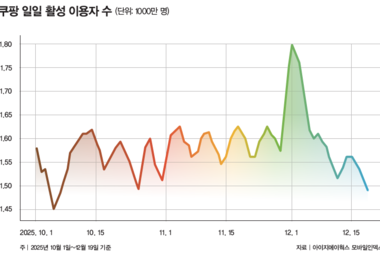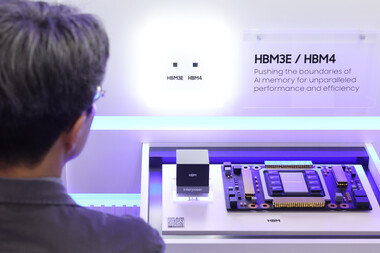[문제] The following appeared in a report by the School District of Eyleria.
“Nationally, the average ratio of computers to students in kindergarten through grade 12 (K-12) is 1:5. Educators indicate that this is very good ratio. This means that across the country, all students have access to and can use computers daily in their classrooms. In Eyleria’s K-12 schools, the ratio of computers to students is 1:7. This number is sufficient to ensure that all of Eyleria’s students, by the time they graduate from high school, will be fully proficient in the use of computer technology. Thus, there is no reason to spend any of the schools’ budget on computers or other technology in the next few years.”
다음은 일리어리아(Eyleria) 학교지역에 대한 보고서다.
“국가적으로 유치원에서 고3(K-12)까지 컴퓨터와 학생 간의 평균 비율은 1대 5이다. 교육자들은 이는 매우 좋은 비율이라고 지적한다. 이는 전국적으로 모든 학생들이 교실에서 컴퓨터에 접속할 수 있고 사용할 수 있음을 의미한다. 일리어리아의 K-12학교에서는 컴퓨터 대 학생의 비율이 1대 7이다. 이 수치는 일리어리아의 모든 학생이 고등학교를 졸업하는 시점까지 컴퓨터 기술을 사용하는 데 충분하다는 점을 입증한다. 그러므로 향후 몇 년 동안 컴퓨터 혹은 다른 기술에 대한 학교 예산을 낭비할 이유가 없다.” - GRE Argue 에세이
[학생 작문] The author asserts that School District of Eyleria does not have to spend any [1] budget on [2] the computers and other technologies. To support this argument, the author uses the national [3] wide ratio of computers to students [4] in kindergarten through grade 12(K-12) which is [5] 1:5, and the ratio of computers [6] to K-12 student in Eyleria [7] which is 1:7. However, the argument is unconvincing due to several reasons.
[8] Firstly, the author cites that educators indicated [9] the ratio 1:5 is [10] very good ratio. [11] However, there is no information about what data educators might use for their conclusion. Also, the author did not explain how [12] is 1:5 [13] very good ratio since there is little evidence that all students would have access to and [14] can use computers daily in their classrooms with the [15] ratio 1:5. Further, the author applies the average data for K-12 students to all students across the country. [16] Yet, there is no evidence that K-12 students represent all students over the nation.
Secondly, the author supposes that the ratio of computers to K-12 students in Eyleria is sufficient for all students in Eyleria to be fully proficient in the use of computer technology. The author again generalizes the data of only K-12 students [17] to all students in Eyleria. Also, the author [18] use the [19] ratio 1:7 to support the argument, [20] there is no explanation [21] how the [22] ratio 1:7 is sufficient. [23] Although the true ratio of computers to students is 1:7, it is clearly less than 1:5, which might be a big difference.
Lastly, the author concludes that the school [24] needs to spend [25] budget [26] neither to the computers, [27] nor to other technologies [28] also. Although, the assumptions and conclusions about the computers [29] are true, there is no data about other technologies.
In sum, the assertion is not persuasive as it stands. To strengthen, the author needs to provide the ratio of computers to students for not just K-12 students but for all students. Also, the author needs to fill in the gap between 1:5 and 1:7, and data about other technologies.
[Comment] This is a very strong essay and makes very clear, logical points. I think it is very good and well thought. The only weakness I see is the argument that K-12 does not represent “all” students. Actually, K-12 pretty much accounts for all primary and secondary school education in the US and Canada, and since the question states that it is a national average, we can assume that it does account for “all” students in general. True, it does not account for university students, but it basically is giving a nationwide assessment for all children under the age of 18. Other than that, the essay is very strong.
이 에세이는 매우 강하고, 명확하고 논리적인 요점을 갖고 있다. 매우 잘 쓰인 글이며 깊은 사고를 담고 있다. 유일한 약점은 K-12(유치원에서 고3까지)가 모든 학생을 대표하지 못한다는 논박에 있다. 실제로 K-12는 미국과 캐나다에서의 모든 초등과 고등 교육을 설명하고 있기 때문이다. 질문에서 국가적인 평균을 언급하고 있기 때문에, 우리는 일반적으로 모든 학생을 설명한다고 추측할 수 있다. 물론 대학교 학생까지 설명하는 것은 아니지만 기본적으로 18세 이하 모든 학생에 대한 전국적인 평가를 내리고 있다. 이런 점을 제외하고는 매우 잘된 에세이다.
“Nationally, the average ratio of computers to students in kindergarten through grade 12 (K-12) is 1:5. Educators indicate that this is very good ratio. This means that across the country, all students have access to and can use computers daily in their classrooms. In Eyleria’s K-12 schools, the ratio of computers to students is 1:7. This number is sufficient to ensure that all of Eyleria’s students, by the time they graduate from high school, will be fully proficient in the use of computer technology. Thus, there is no reason to spend any of the schools’ budget on computers or other technology in the next few years.”
다음은 일리어리아(Eyleria) 학교지역에 대한 보고서다.
“국가적으로 유치원에서 고3(K-12)까지 컴퓨터와 학생 간의 평균 비율은 1대 5이다. 교육자들은 이는 매우 좋은 비율이라고 지적한다. 이는 전국적으로 모든 학생들이 교실에서 컴퓨터에 접속할 수 있고 사용할 수 있음을 의미한다. 일리어리아의 K-12학교에서는 컴퓨터 대 학생의 비율이 1대 7이다. 이 수치는 일리어리아의 모든 학생이 고등학교를 졸업하는 시점까지 컴퓨터 기술을 사용하는 데 충분하다는 점을 입증한다. 그러므로 향후 몇 년 동안 컴퓨터 혹은 다른 기술에 대한 학교 예산을 낭비할 이유가 없다.” - GRE Argue 에세이
[학생 작문] The author asserts that School District of Eyleria does not have to spend any [1] budget on [2] the computers and other technologies. To support this argument, the author uses the national [3] wide ratio of computers to students [4] in kindergarten through grade 12(K-12) which is [5] 1:5, and the ratio of computers [6] to K-12 student in Eyleria [7] which is 1:7. However, the argument is unconvincing due to several reasons.
[8] Firstly, the author cites that educators indicated [9] the ratio 1:5 is [10] very good ratio. [11] However, there is no information about what data educators might use for their conclusion. Also, the author did not explain how [12] is 1:5 [13] very good ratio since there is little evidence that all students would have access to and [14] can use computers daily in their classrooms with the [15] ratio 1:5. Further, the author applies the average data for K-12 students to all students across the country. [16] Yet, there is no evidence that K-12 students represent all students over the nation.
Secondly, the author supposes that the ratio of computers to K-12 students in Eyleria is sufficient for all students in Eyleria to be fully proficient in the use of computer technology. The author again generalizes the data of only K-12 students [17] to all students in Eyleria. Also, the author [18] use the [19] ratio 1:7 to support the argument, [20] there is no explanation [21] how the [22] ratio 1:7 is sufficient. [23] Although the true ratio of computers to students is 1:7, it is clearly less than 1:5, which might be a big difference.
Lastly, the author concludes that the school [24] needs to spend [25] budget [26] neither to the computers, [27] nor to other technologies [28] also. Although, the assumptions and conclusions about the computers [29] are true, there is no data about other technologies.
In sum, the assertion is not persuasive as it stands. To strengthen, the author needs to provide the ratio of computers to students for not just K-12 students but for all students. Also, the author needs to fill in the gap between 1:5 and 1:7, and data about other technologies.
|
[Comment] This is a very strong essay and makes very clear, logical points. I think it is very good and well thought. The only weakness I see is the argument that K-12 does not represent “all” students. Actually, K-12 pretty much accounts for all primary and secondary school education in the US and Canada, and since the question states that it is a national average, we can assume that it does account for “all” students in general. True, it does not account for university students, but it basically is giving a nationwide assessment for all children under the age of 18. Other than that, the essay is very strong.
이 에세이는 매우 강하고, 명확하고 논리적인 요점을 갖고 있다. 매우 잘 쓰인 글이며 깊은 사고를 담고 있다. 유일한 약점은 K-12(유치원에서 고3까지)가 모든 학생을 대표하지 못한다는 논박에 있다. 실제로 K-12는 미국과 캐나다에서의 모든 초등과 고등 교육을 설명하고 있기 때문이다. 질문에서 국가적인 평균을 언급하고 있기 때문에, 우리는 일반적으로 모든 학생을 설명한다고 추측할 수 있다. 물론 대학교 학생까지 설명하는 것은 아니지만 기본적으로 18세 이하 모든 학생에 대한 전국적인 평가를 내리고 있다. 이런 점을 제외하고는 매우 잘된 에세이다.
















